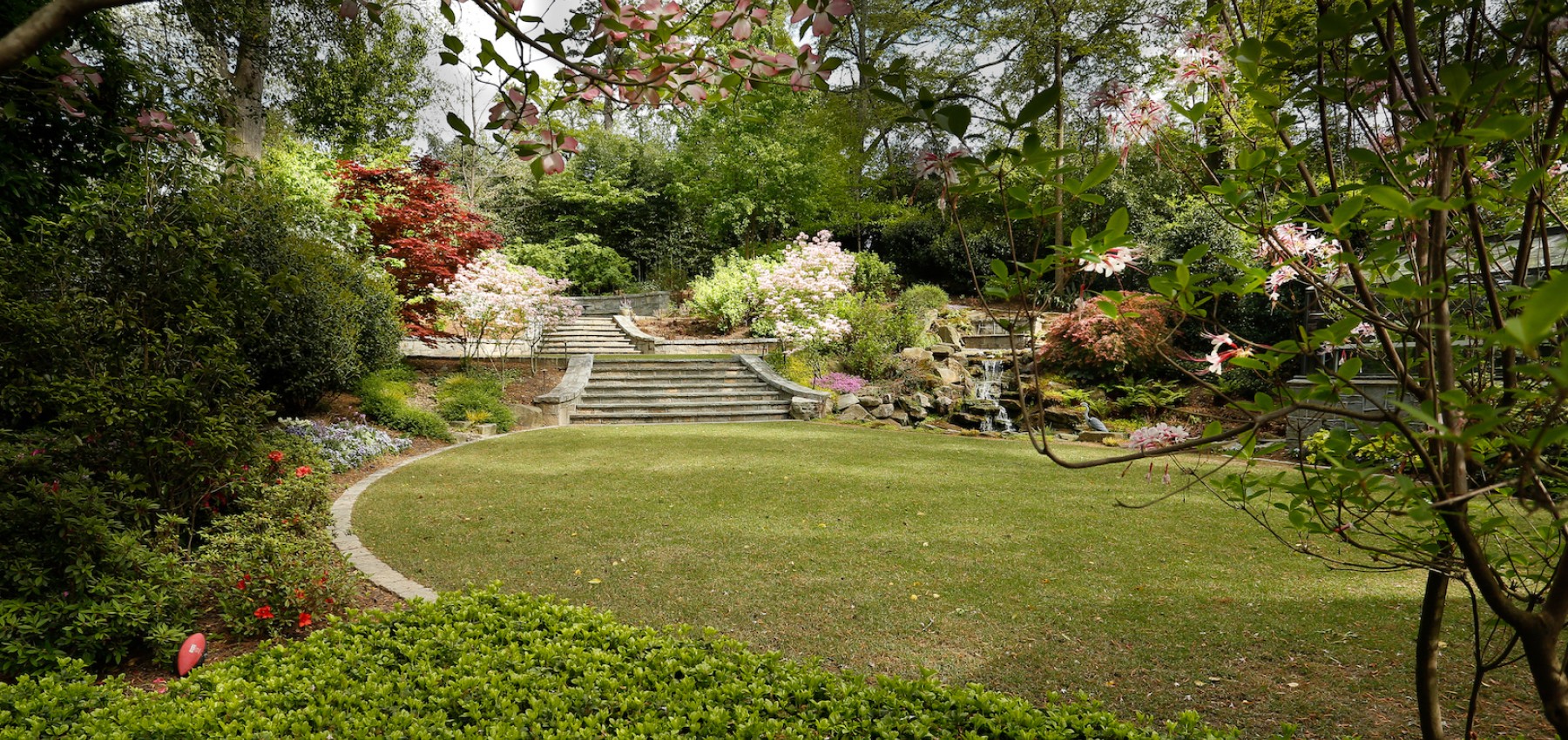What Does Landscapers Mean?
What Does Landscapers Mean?
Blog Article
The smart Trick of Landscapers That Nobody is Discussing
Table of ContentsIndicators on Landscapers You Should KnowThe 9-Second Trick For LandscapersAll about LandscapersFascination About LandscapersThe Landscapers Statements
- A tree or shrub (hedge) that loses its fallen leaves in winter months. In the PNW there are semi-deciduous or semi-evergreen plants that may lose their fallen leaves depending upon exactly how cool the winter season is. Abelia and some hebe are examples. Landscapers. - A flat event area, made of wood or composite material (made to resemble wood), generally surrounding or affixed to a framework.

- Granite that is weathered to the factor that it is a very great accumulation. This is an all-natural procedure, and the outcome can be utilized for courses and patio areas. Decayed granite is frequently described as DG. It is especially beneficial in contemporary landscapes. - Key landscape attributes being suggested in a landscape design strategy.
10 Easy Facts About Landscapers Explained
These goals direct the layout process, not the designer's design or choices. Usual layout goals in Portland are low upkeep, drought tolerant, and animal friendly. - Refine for eliminating or thinning the dead lower level of a fully grown lawn. Thatch is grass that has passed away and gathered listed below the eco-friendly blades.
However, over time this layer can get very thick and make it hard for water, sun, and nutrients to get to parts of the grass.- The process of gathering and controlling the flow of water on a building. This can be performed with grading, French drains pipes, dry wells, absorptive surface areas, sump pump, rain gardens, and more.
Properties at the end of hills, with natural springtimes, or packed with hefty clay have one of the most drainage problems.- A sluggish feeding watering system that utilizes adaptable tubing and emitters to send out an exact amount of water to every plant. This is one of the most reliable method of irrigating plants. - The capability of a plant to endure without much summer season water.
- A yard feature where water is represented by an aggregate rock item, typically a gravel or granite.- A stone or natural flagstone patio area, path, or sidewalk constructed without a concrete base.
Landscapers Things To Know Before You Buy
- A stone preserving or totally free standing wall surface built without the usage of mortar. A very experienced mason is needed for a completely dry stack stone wall. Many wall surfaces in Portland are not dry stacked, also if they show up to see this site be. - A below ground structure that accumulate water and permits it to slow percolate right into the dirt around it.
Landscape layout that is suitable with a sites' atmosphere in both appearance and sustainability without negative impacts to the setting. Edging in the landscape is a line of separation that creates visual passion in the yard by dividing one sector from an additional sector.
Areas can likewise have a feeling of "unit" provided by trees, other growings, fences, or screens. The landscape near the access to read the full info here a structure. A tree, hedge or vine, trained to grow on a wall surface or fencing into a certain pattern. Specifically useful for fruit trees, making it very easy to harvest the fruit and having mess.
A plant that is not indigenous to the location where it will certainly be grown. Not all "exotics" are invasive or harmful, and lots of can be well acted or dry spell forgiving (Landscapers). A mass growing of brushes. Thicker bladed turf yard that spread out by means of rhizomes.: The level of dirt on your home before bark dirt or compost is spread.
The 10-Minute Rule for Landscapers

The purpose, reason, or action that a location is be landscaped for. Stairways work, for instance, to allow foot web traffic backwards and forwards an incline. Space for growing plants for viewing, consuming, or exercise. A roofed structure utilized over an outside gathering room. The sprouting of a seed, possibly describing a grass that have a peek at these guys is being grown from seed.
Low plants that are permitted or urged to spread over an area. Can refer to any type of "difficult" garden elements including statuary or stones yet a lot of typically is made use of to refer to courses, patio areas, and walls.: Height difference in between the level of water in a pond (or the degree of the pump if it sits outside the fish pond) and the top electrical outlet of water which affects efficiency of the water pump in gph (gallons per hour).
:max_bytes(150000):strip_icc()/look-up-look-down-photography--o7ASOHDV9E-unsplash-62ac6efd6d724c7abb7320fefe03b411.jpg)
The Ultimate Guide To Landscapers
An even more relaxed garden dominated by curved instead of straight bed lines and a much less stiff structure. Standard PNW landscapes are informal. A plant that spreads out more than wanted, or right into habitats where it does damages. Rose city has a listing of intrusive plants that ought to not be installed in landscapes since they can infect woodlands or rivers and be hard to manage.
Can consist of head positionings and insurance coverage, pipeline sizing, GPM specifications, and products needed to install this system. Licensed professional that designs landscapes, coached in design and style as well as in gardening.
Landscape developers generally have much less schooling than Landscape Architects and are not licensed. A finished landscape layout, outlining all components for the new landscape.
Calcium product used to raise the pH in soil, which will certainly make it less friendly to moss. A water tight HDPE product used underneath ponds, streams and waterfalls in water features. Utilizing numerous plantings of the exact same selection to fill out a location in the landscape. This can decrease upkeep and water use in the garden.
Report this page